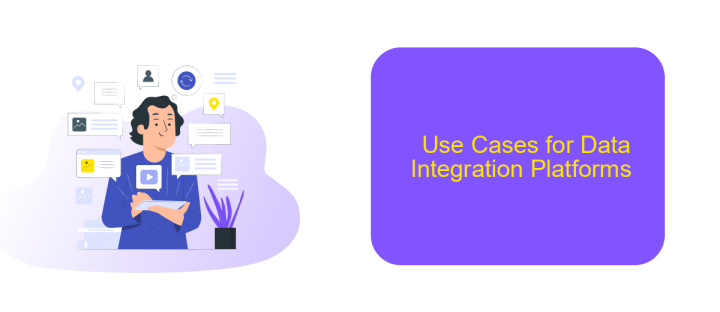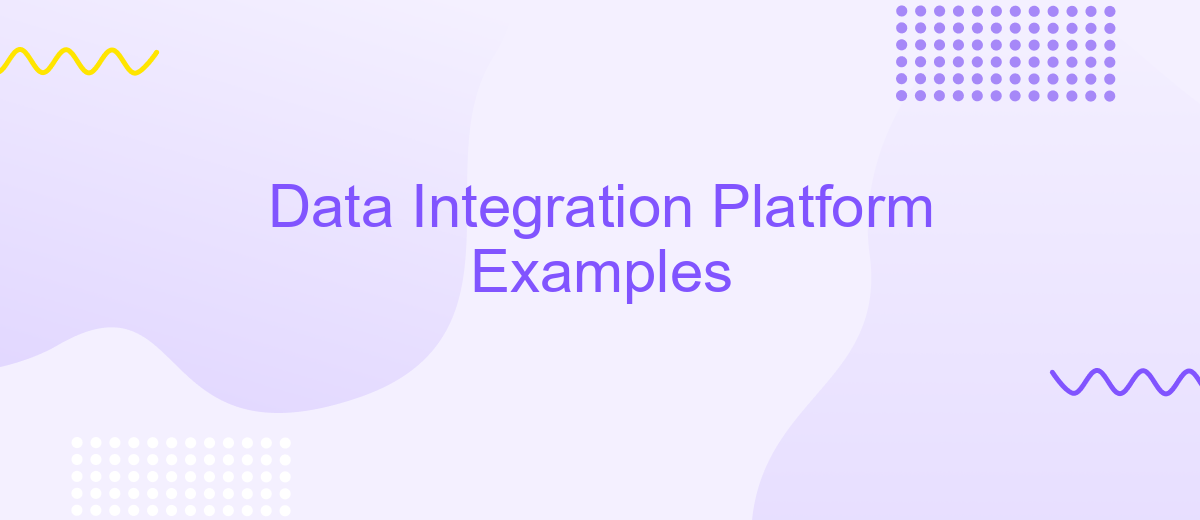Data Integration Platform Examples
In today's data-driven world, businesses are inundated with information from various sources. To harness the full potential of this data, seamless integration is crucial. Data integration platforms offer solutions to unify disparate data sets, enabling more efficient analysis and decision-making. This article explores some of the leading data integration platforms, highlighting their features, benefits, and use cases.
Introduction
In today's data-driven world, integrating disparate data sources is essential for organizations seeking to gain actionable insights and maintain a competitive edge. Data integration platforms streamline this process by enabling seamless data flow between various applications, databases, and systems. These platforms not only enhance data consistency and quality but also improve decision-making capabilities.
- Centralized data management
- Streamlined workflows
- Enhanced data quality and consistency
- Improved decision-making
- Scalability and flexibility
One notable example is ApiX-Drive, a versatile data integration service that simplifies the process of connecting different applications and automating data workflows. With its user-friendly interface and extensive range of supported integrations, ApiX-Drive allows businesses to effortlessly synchronize data across various platforms, ensuring that critical information is always up-to-date and accessible. By leveraging such platforms, organizations can efficiently manage their data ecosystem and drive better business outcomes.
Common Data Integration Platform Examples

Data integration platforms are essential for organizations looking to streamline their data flow and improve decision-making processes. One popular example is Talend, which offers a comprehensive suite of tools for data integration, data quality, and data governance. Talend's open-source nature and robust community support make it a preferred choice for many businesses. Another notable platform is Informatica, known for its advanced data integration capabilities and wide range of connectors, making it suitable for complex enterprise environments.
For those seeking a more user-friendly solution, ApiX-Drive is an excellent option. This platform simplifies the integration process with its intuitive interface and a wide array of pre-built connectors, allowing users to automate data flows between various applications without needing extensive technical knowledge. Additionally, ApiX-Drive offers real-time data synchronization, ensuring that your data is always up-to-date across all systems. Whether you're a small business or a large enterprise, these platforms provide the tools needed to effectively manage and integrate your data.
Characteristics of a Data Integration Platform

A robust data integration platform is essential for seamless data management and analytics. These platforms typically offer a variety of features that ensure efficient data integration and transformation processes.
- Scalability: The platform should handle increasing data volumes and complex data structures without compromising performance.
- Data Quality Management: Tools to cleanse, validate, and enrich data are crucial for maintaining high data quality.
- Real-Time Data Processing: Capabilities for real-time data integration ensure timely and accurate data availability.
- Security: Robust security measures, including encryption and access controls, protect sensitive data.
- Ease of Use: User-friendly interfaces and pre-built connectors, like those offered by ApiX-Drive, simplify the integration process.
Incorporating these characteristics into your data integration platform can significantly enhance your data management strategy. Services like ApiX-Drive provide intuitive tools for setting up integrations, making it easier to connect various data sources and automate workflows efficiently.
Use Cases for Data Integration Platforms

Data integration platforms are essential tools for organizations looking to streamline their data management processes. These platforms enable businesses to connect disparate data sources, ensuring that data flows seamlessly between systems. This integration is crucial for maintaining data accuracy, consistency, and accessibility across various applications.
One common use case for data integration platforms is in the realm of business intelligence. By consolidating data from multiple sources, organizations can generate comprehensive reports and gain valuable insights. Another significant use case is in customer relationship management (CRM), where integrating data from different touchpoints provides a 360-degree view of customer interactions.
- Automating data workflows to reduce manual data entry and errors
- Synchronizing data between cloud applications and on-premises systems
- Enabling real-time data updates for timely decision-making
- Integrating e-commerce platforms with inventory management systems
- Combining marketing data from various channels for unified analytics
Platforms like ApiX-Drive simplify these integration tasks by offering pre-built connectors and an intuitive interface. This allows businesses to set up and manage their integrations without the need for extensive technical expertise. As a result, organizations can focus on leveraging their data for strategic initiatives rather than getting bogged down by integration complexities.
- Automate the work of an online store or landing
- Empower through integration
- Don't spend money on programmers and integrators
- Save time by automating routine tasks
Conclusion
In conclusion, the landscape of data integration platforms is vast and continually evolving, offering a wide range of solutions to meet various business needs. From simple ETL tools to complex data orchestration platforms, organizations have numerous options to choose from based on their specific requirements. The key is to identify a platform that not only integrates well with existing systems but also scales efficiently as the organization grows.
One notable example is ApiX-Drive, a service that simplifies the integration process by offering a user-friendly interface and robust automation capabilities. With ApiX-Drive, businesses can easily connect multiple applications and automate data workflows without extensive technical expertise. This not only saves time but also reduces the risk of errors, ensuring that data is consistently accurate and up-to-date. As businesses continue to prioritize data-driven decision-making, investing in a reliable data integration platform becomes increasingly essential for maintaining a competitive edge.
FAQ
What is a Data Integration Platform?
Why is data integration important for businesses?
What are some common features of Data Integration Platforms?
How can I automate data integration processes?
What should I consider when choosing a Data Integration Platform?
Apix-Drive will help optimize business processes, save you from a lot of routine tasks and unnecessary costs for automation, attracting additional specialists. Try setting up a free test connection with ApiX-Drive and see for yourself. Now you have to think about where to invest the freed time and money!


